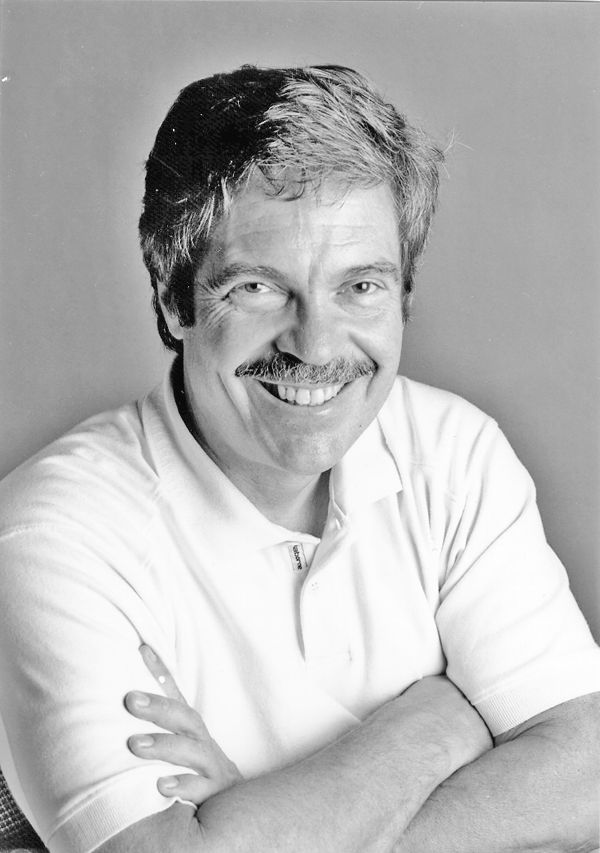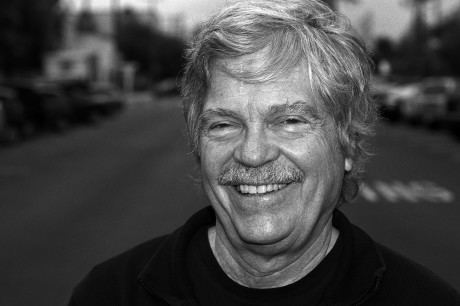Citizenship United States Role Computer scientist | Name Alan Kay | |
 | ||
Institutions Xerox PARCStanford UniversityAtariApple Inc. ATGWalt Disney ImagineeringUCLAKyoto UniversityMITViewpoints Research InstituteHewlett-Packard Labs Alma mater University of Colorado at Boulder,University of Utah Doctoral advisor David C. EvansRobert S. Barton Known for Dynabookobject-oriented programmingSmalltalkgraphical user interface windows Education University of Utah, University of Colorado Boulder, University of Utah College of Engineering Parents Hector W. Kay, Katherine Kay Similar People Ivan Sutherland, Butler Lampson, Seymour Papert, Charles P Thacker, Bonnie MacBird | ||
Alan kay on learning and computer science
Alan Curtis Kay (born May 17, 1940) is an American computer scientist. He has been elected a Fellow of the American Academy of Arts and Sciences, the National Academy of Engineering, and the Royal Society of Arts. He is best known for his pioneering work on object-oriented programming and windowing graphical user interface design.
Contents
- Alan kay on learning and computer science
- Rethinking cs education alan kay crossroads 2015
- Early life and work
- Recent work and recognition
- Squeak Etoys and Croquet
- Tweak
- Childrens Machine
- Reinventing programming
- Awards and honors
- References

He is the president of the Viewpoints Research Institute, and an Adjunct Professor of Computer Science at the University of California, Los Angeles. He is also on the advisory board of TTI/Vanguard. Until mid-2005, he was a Senior Fellow at HP Labs, a Visiting Professor at Kyoto University, and an Adjunct Professor at the Massachusetts Institute of Technology (MIT). After 10 years at Xerox PARC, Kay became Atari's chief scientist for three years.

Kay is also a former professional jazz guitarist, composer, and theatrical designer, and an amateur classical pipe organist.
Rethinking cs education alan kay crossroads 2015
Early life and work
In an interview on education in America with the Davis Group Ltd. Alan Kay said,
I had the fortune or misfortune to learn how to read fluently starting at the age of three. So I had read maybe 150 books by the time I hit 1st grade. And I already knew that the teachers were lying to me.
Originally from Springfield, Massachusetts, Kay attended the University of Colorado at Boulder, earning a bachelor's degree in Mathematics and Molecular Biology. Before and during this time, he worked as a professional jazz guitarist.
In 1966, he began graduate school at the University of Utah College of Engineering, earning a master's degree and a Ph.D. degree.
His doctoral thesis was entitled FLEX: A Flexible Extendable Language, describing an invention of computer language known as FLEX.
While at the University of Utah, he worked with Ivan Sutherland, who had done pioneering graphics programs including Sketchpad. This greatly inspired Kay's evolving views on objects and programming. As he grew busier with ARPA research, he quit his career as a professional musician.
In 1968, he met Seymour Papert and learned of the Logo programming language, a dialect of Lisp optimized for educational purposes. This led him to learn of the work of Jean Piaget, Jerome Bruner, Lev Vygotsky, and of constructionist learning. These further influenced his views.
In 1970, Kay joined Xerox Corporation's Palo Alto Research Center, PARC. In the 1970s he was one of the key members there to develop prototypes of networked workstations using the programming language Smalltalk. These inventions were later commercialized by Apple Computer in their Lisa and Macintosh computers.
Kay is one of the fathers of the idea of object-oriented programming, which he named, along with some colleagues at PARC. Some of the original object-oriented concepts, including the use of the words 'object' and 'class', had been developed for Simula 67 at the Norwegian Computing Center. Later he said:
I'm sorry that I long ago coined the term "objects" for this topic because it gets many people to focus on the lesser idea. The big idea is "messaging"
Kay conceived the Dynabook concept which defined the conceptual basics for laptop and tablet computers and E-books, and is the architect of the modern overlapping windowing graphical user interface (GUI). Because the Dynabook was conceived as an educational platform, Kay is considered to be one of the first researchers into mobile learning, and indeed, many features of the Dynabook concept have been adopted in the design of the One Laptop Per Child educational platform, with which Kay is actively involved.
The field of computing is awaiting new revolution to happen, according to Kay, in which educational communities, parents, and children will not see in it a set of tools invented by Douglas Engelbart, but a medium in the Marshall McLuhan sense. He wrote:
As with Simulas leading to OOP, this encounter finally hit me with what the destiny of personal computing really was going to be. Not a personal dynamic vehicle, as in Engelbart’s metaphor opposed to the IBM “railroads”, but something much more profound: a personal dynamic medium. With a vehicle one could wait until high school and give “drivers ed”, but if it was a medium, it had to extend into the world of childhood.
Recent work and recognition
Starting in 1984, Kay was an Apple Fellow at Apple Computer until the closing of the ATG (Advanced Technology Group), one of the company's R&D divisions. He was then recruited by his friend Bran Ferren, head of R&D at Walt Disney, to join Walt Disney Imagineering as a Disney Fellow and remained there until Ferren left to start Applied Minds Inc, with Imagineer Danny Hillis, and Disney ended its Fellows program. After Disney, in 2001 he founded Viewpoints Research Institute, a non-profit organization dedicated to children, learning, and advanced software development. For its first ten years, Kay and his Viewpoints group were based at Applied Minds in Glendale, where he and Ferren continued to work together on various projects.
Later, Kay became a Senior Fellow at Hewlett-Packard until HP disbanded the Advanced Software Research Team on July 20, 2005. He is currently head of Viewpoints Research Institute.
Kay taught a Fall 2011 class, "Powerful Ideas: Useful Tools to Understand the World", at NYU's Interactive Telecommunications Program (ITP) along with full-time ITP faculty member Nancy Hechinger. The goal of the class was to devise new forms of teaching/learning based on fundamental, powerful concepts rather than traditional rote learning.
Squeak, Etoys, and Croquet
In December 1995, while still at Apple, Kay collaborated with many others to start the open source Squeak version of Smalltalk, and he continues to work on it. As part of this effort, in November 1996, his team began research on what became the Etoys system. More recently he started, along with David A. Smith, David P. Reed, Andreas Raab, Rick McGeer, Julian Lombardi and Mark McCahill, the Croquet Project, an open source networked 2D and 3D environment for collaborative work.
Tweak
In 2001, it became clear that the Etoy architecture in Squeak had reached its limits in what the Morphic interface infrastructure could do. Andreas Raab was a researcher working in Kay's group, then at Hewlett-Packard. He proposed defining a "script process" and providing a default scheduling mechanism that avoids several more general problems. The result was a new user interface, proposed to replace the Squeak Morphic user interface in the future. Tweak added mechanisms of islands, asynchronous messaging, players and costumes, language extensions, projects, and tile scripting. Its underlying object system is class-based, but to users (during programming) it acts like it is prototype-based. Tweak objects are created and run in Tweak project windows.
Children's Machine
In November 2005, at the World Summit on the Information Society, the MIT research laboratories unveiled a new laptop computer, for educational use around the world. It has many names: the $100 Laptop, the One Laptop per Child program, the Children's Machine, and the XO-1. The program was begun and is sustained by Kay's friend, Nicholas Negroponte, and is based on Kay's Dynabook ideal. Kay is a prominent co-developer of the computer, focusing on its educational software using Squeak and Etoys.
Reinventing programming
Kay has lectured extensively on the idea that the computer revolution is very new, and all of the good ideas have not been universally implemented. Lectures at OOPSLA 1997 conference and his ACM Turing award talk, entitled "The Computer Revolution Hasn't Happened Yet" were informed by his experiences with Sketchpad, Simula, Smalltalk, and the bloated code of commercial software.
On August 31, 2006, Kay's proposal to the United States National Science Foundation (NSF) was granted, thus funding Viewpoints Research Institute for several years. The proposal title was: STEPS Toward the Reinvention of Programming: A compact and Practical Model of Personal Computing as a Self-exploratorium. A sense of what Kay is trying to do comes from this quote, from the abstract of a seminar on this given at Intel Research Labs, Berkeley: "The conglomeration of commercial and most open source software consumes in the neighborhood of several hundreds of millions of lines of code these days. We wonder: how small could be an understandable practical "Model T" design that covers this functionality? 1M lines of code? 200K LOC? 100K LOC? 20K LOC?"
Awards and honors
Alan Kay has received many awards and honors. Among them:
His other honors include the J-D Warnier Prix d’Informatique, the ACM Systems Software Award, the NEC Computers & Communication Foundation Prize, the Funai Foundation Prize, the Lewis Branscomb Technology Award, and the ACM SIGCSE Award for Outstanding Contributions to Computer Science Education.
